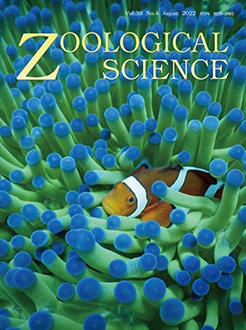Whether the growth zone found in the coronal plate of echinoids can be used as a chronometer to estimate the age of individuals is controversial. In spatangoid echinoids, it is not known whether the growth zone formation occurs annually. In this study, the growth zone formation process was examined in four spatangoid species from natural conditions. In Nacospatangus alta and Brissus agassizii, the formation of a dark zone indicates the maturity of the gonad and does not necessarily correspond to the age of the individual. In Lovenia elongata, dark growth zones were formed several times per year. Unlike in the other studied species, in Metalia spatagus, the light and dark growth zones appeared to be formed radially, rather than in a ring-like manner. These results may indicate that the frequency and mode of growth zone formation differ across species. As such, it is not appropriate to use the growth zone as a chronometer in spatangoid echinoids. If the growth zone is to be used as an indicator of age, more research is needed about the phase of forming the growth zone in each echinoid species.
How to translate text using browser tools
8 June 2022
The Growth Zones of Test Plates in Four Spatangoid Echinoid Species: Irregular Pattern
Masaya Saitoh
ACCESS THE FULL ARTICLE

Zoological Science
Vol. 39 • No. 4
August 2022
Vol. 39 • No. 4
August 2022
chronometer
growth zone
life history
reproductive cycle
spatangoid




